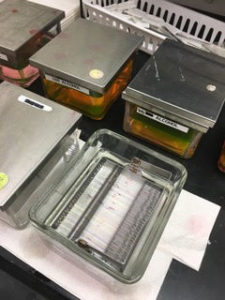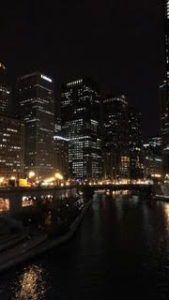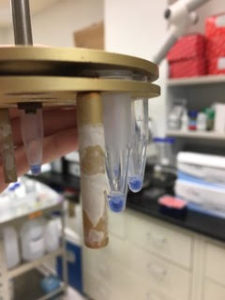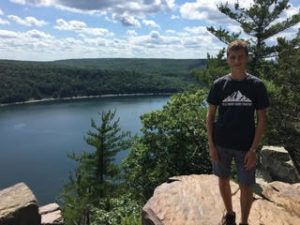This week, I continued with my attempts to produce coherent results from the Western Blot that I had started in the previous week.

The slides containing the stained human tissue in temporary storage in Xylene
The Western Blot is a widely applied analytical technique that allows researchers to detect the expression levels of specific proteins across different samples. By examining the variance (or sometimes the lack thereof) in the amounts of protein detected, we can have a better picture of how a treatment affects specific cell lines and types.
The test takes multiple days to complete and follows a specific protocol that gives endless room for potential error. The equipment used is extremely precise; the pipettes alone can measure to the fraction of a micrometer (a millionth of a liter). There are numerous solutions that have to be created from scratch and applied at different points in the process.
Throughout the test, I completed numerous steps such as extracting the protein from the cells and
inhibiting the protease, placing the samples into wells and then into a complex scanner, standardizing the amount of total protein for each sample, providing a solid support for and separating the proteins based on atomic weight through gel electrophoresis, transferring the proteins onto a membrane, and applying different blocking solutions and artificial antibodies that target the proteins and indicate their amount and location to us on a picture.
As of last week, the test had given us inconclusive and conflicting results as a certain normalizing protein that we test for was absent from one of the samples in the membrane (despite other proteins being detected in that sample), meaning that we could not trust the results. On Monday, we could not reconcile this problem, and therefore had to throw the membrane and the data. However, the day managed to be saved as my host family and I made a visit to the Art Institute of Chicago to view an exhibit on the multifaceted and revolutionary works of the French synthetist Paul Gauguin.

A view of downtown Chicago at night
Continuing into the week, my family and I enjoyed the day off on Tuesday to celebrate the 4th of July by attending the local parade and the fireworks in the evening. Other than that, it was a lazy day that I spent with my host family’s dogs and by some reading. The next workday, I tried to do another Western Blot to attempt to discern the expression of our protein. However, on Thursday I once again encountered difficulties similar to the ones on Monday. This leads us to believe that there may be a problem with the age of the antibodies we are using, and so we will have to attempt to try again the following week when new ones are expected to arrive.
That
Friday, I entered the laboratory to perform a hematoxylin and eosin (H&E) stain on some of the

A mixture of loading buffer, Phosphate-buffered saline, and the proteins ready to be boiled.
slides containing human tissues derived from biopsies, which allows histologists to analyze their cellular structuring and makeup. After performing the stain, I also had to attach a coverslip onto the slide that prevents the tissue from detaching and for the slide to be stored indefinitely.
The weekend was spent with my host family by Devil’s Lake in rural Wisconsin, where they attended a wedding. In the meantime, I met with one of their friends and went on a multi-hour hike in the landscape, which was exceptionally beautiful and well worth the visit. There was also more time to delve into a historical account of the Weimar Republic and to enjoy the serenity of the location. After returning on Sunday afternoon, I had the time continue watching the ongoing Tour de France and get ready to continue with my project this next week.





There are no comments published yet.